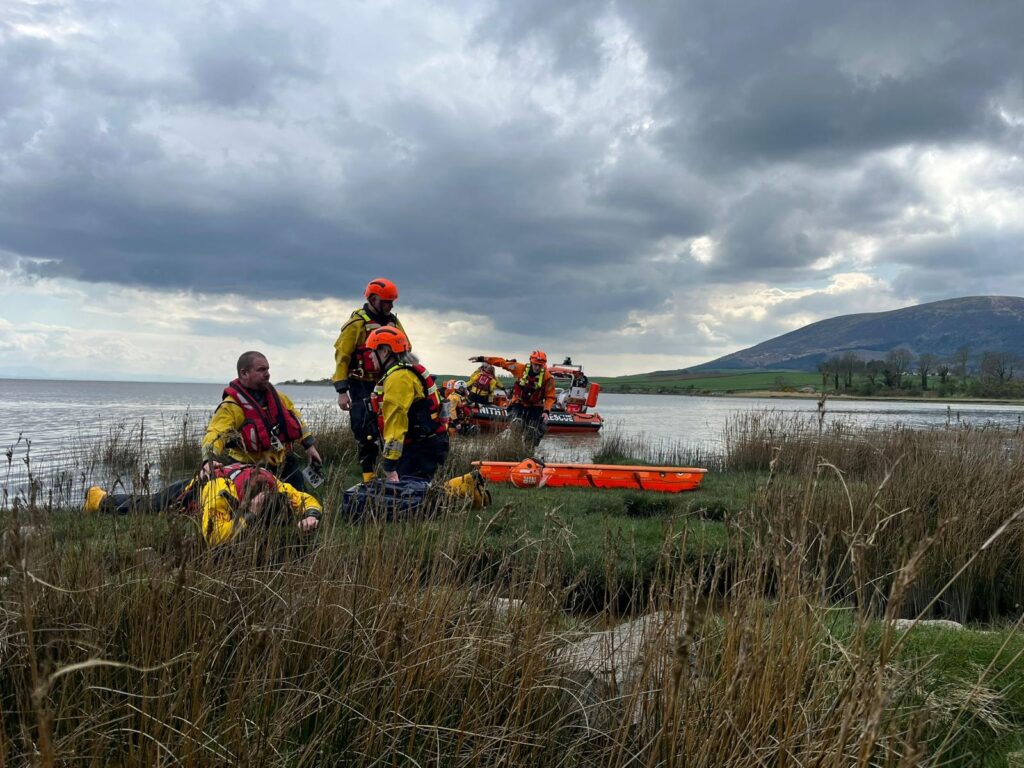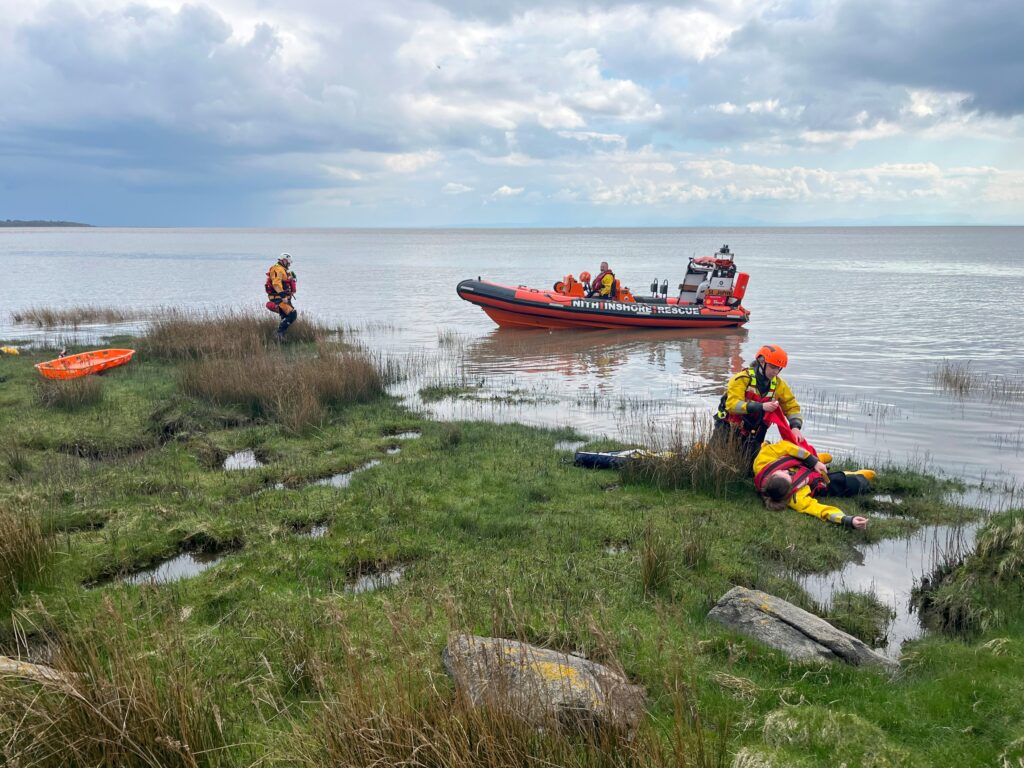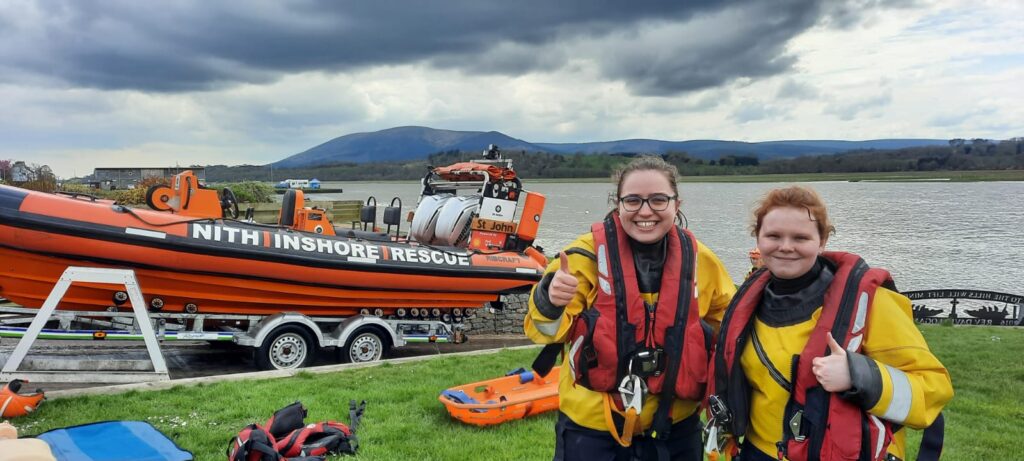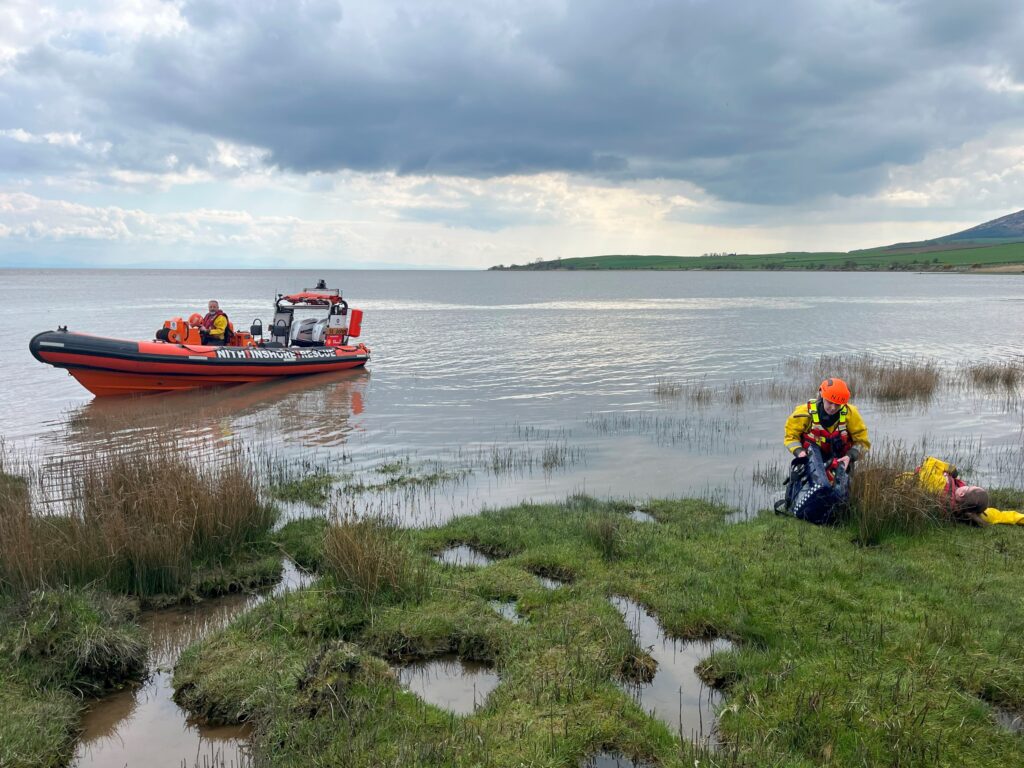
It’s a sunny afternoon on the south coast of Scotland. A few miles from Dumfries the tide has raced up the Nith estuary, covering the mudflats and bringing with it some frolicking porpoises. Around these waters, frequented by fishermen and leisure craft with the backdrop of Criffel looming against the clouds to the West the scene is that of an idyllic rural Spring Day (who wouldn’t want to be a GP here?). Suddenly, over the maritime radio distress frequency there comes a confused report of a speedboat crash on the banks of the river. There are several casualties, some with serious injuries requiring urgent medical attention. Details are unclear but the area of the accident appears entirely inaccessible by road. The tide is rising, and the situation is going to get much worse without an immediate response.
This was the basis of a training exercise for Nith Inshore Rescue, an independent Lifeboat service which operates from the village of Glencaple, near Dumfries. The casualties were played by three third year ScotGEM students invited along to help with some training in “Casualty Care”.
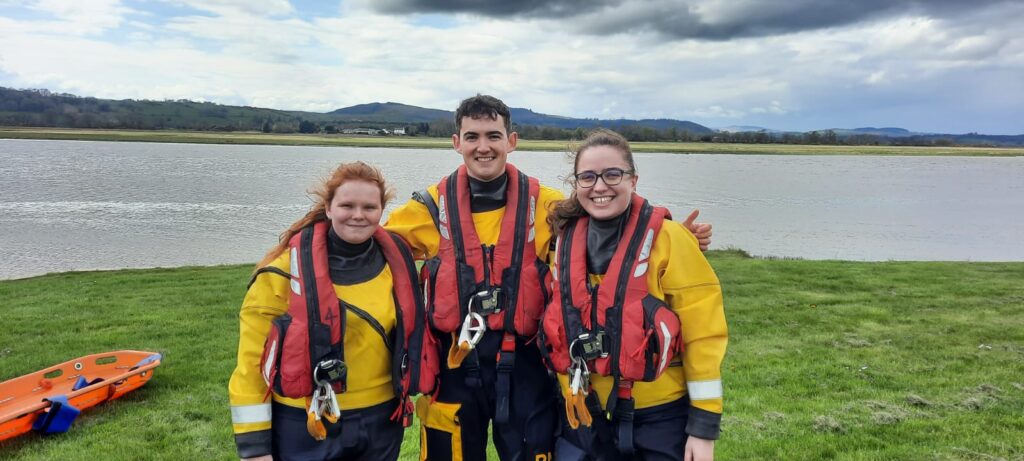
As students, having been exposed to the world of pre-hospital care through PJUC (Patient Journey Urgent Care) in second year we believed we had a passable understanding of the approach to a pre-hospital emergency. For us, a casualty was usually a person sitting on the carpet of a classroom or some plastic sheeting on hospital grounds ready for an “A to E” assessment using the diagnostic equipment we had access to from bags mimicking those carried by BASICS responders. Our aim being to manage the casualty, develop differentials of the pathology present and potentially to start treatment before planning evacuation and completing the simulation. This situation however, was very different.
For the team, the scenario began almost a mile away. The first step was gathering initial information from a “coastguard” controller via VHF radio. Based on this they selected crewmembers, equipment and vessels with which to respond. Arrival on scene was the next challenge, negotiating the muddy shallows of the merse with the lifeboat, disembarking to wade across a muddy bank loaded with kit before entering straight into a triage scenario: Three casualties, one face down near the advancing water’s edge with a potential spinal injury, another with two “broken” legs unable to move without help and another walking around dazed from a bloody headwound. All of whom were using their amateur dramatic abilities to full effect.
The team from the lifeboat sprang into action, separating to assess the casualties. Taking the lead medically was the crew’s doctor. She was being fed information about three distinct presentations, whilst having to maintain control of the situation as a whole. The immediate action was controlling the bleeding of the head injury, then assessment of the two casualties unable to move. The spinal injury took priority, not only due to their injuries but also because of the rapidly approaching Solway tide. Gathering a team and a stretcher, the casualty was extracted with as much spinal protection as could be afforded and carried out to the waiting lifeboat to be sped off to the “ambulance” back at the boathouse. It was then the turn of the broken legged victim to be treated and evacuated before they too were at risk from the approaching water.
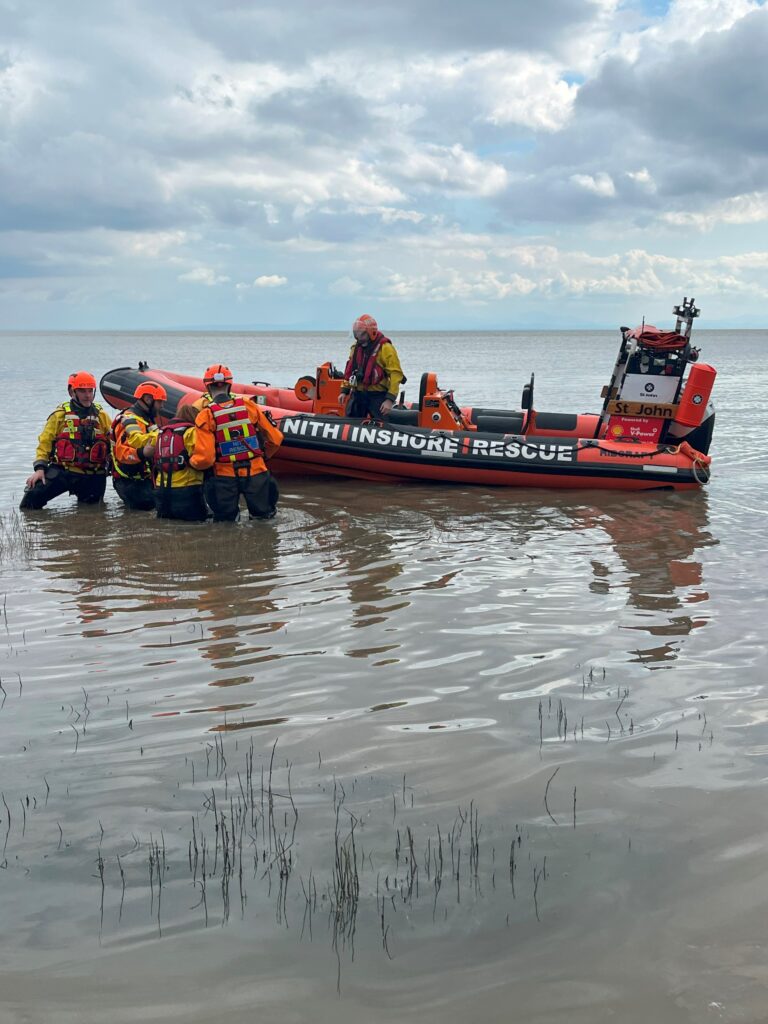
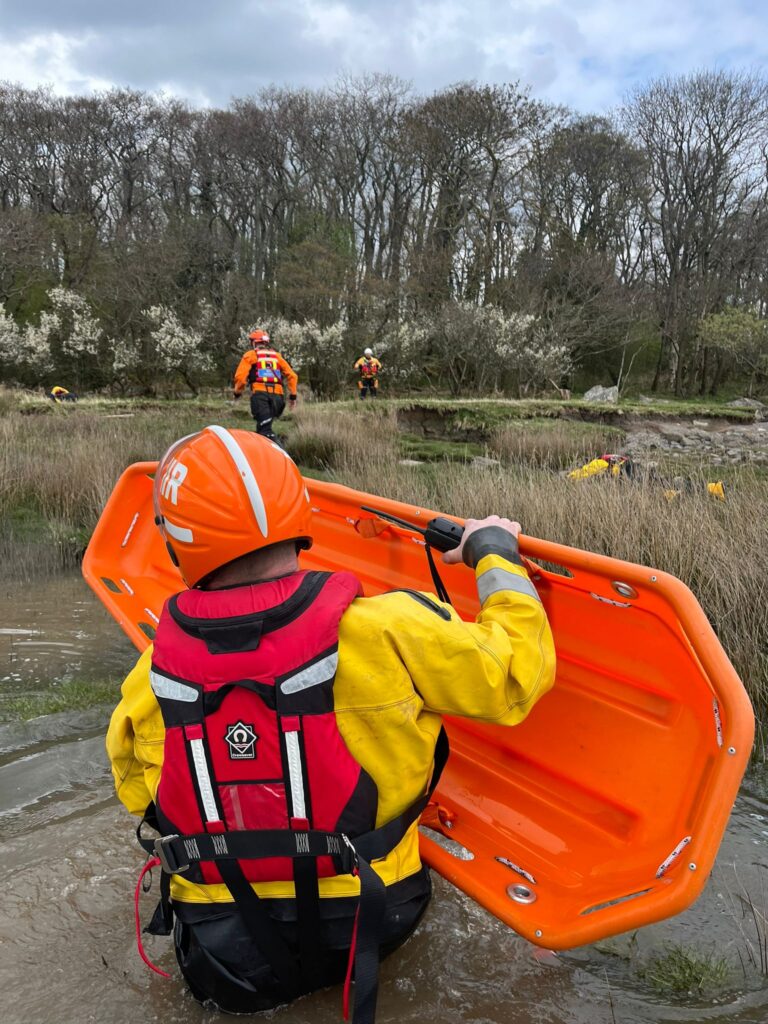
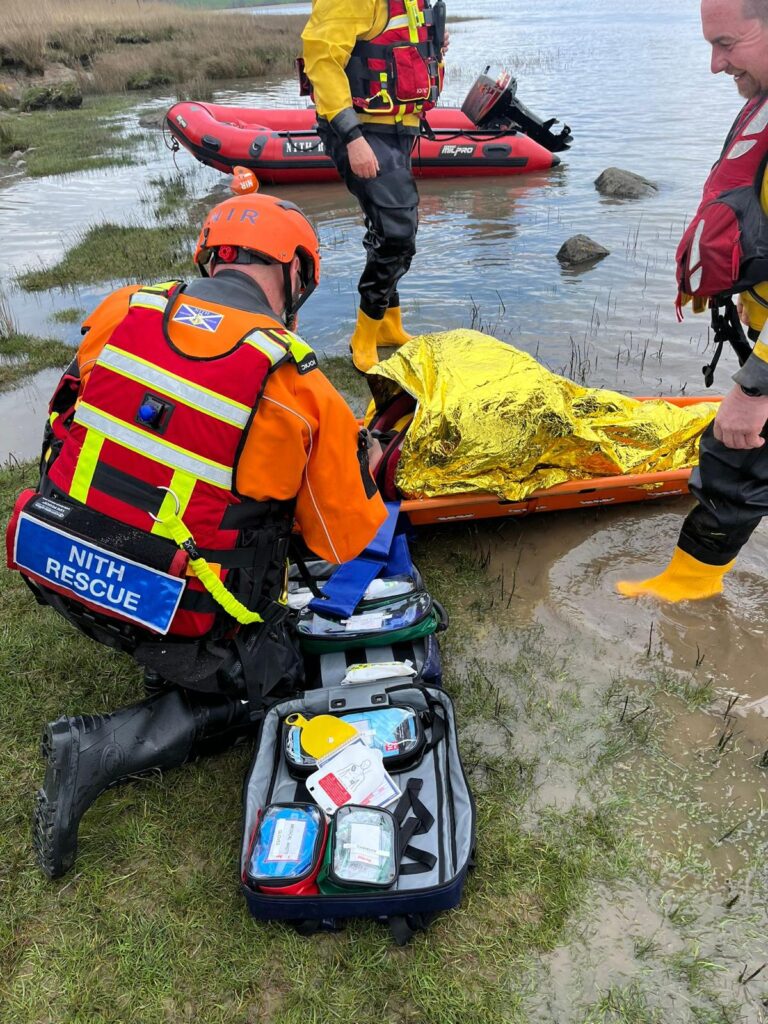
This situation was both complex and technically demanding in an inhospitable environment. An imposed time pressure of the incoming tide necessitated the movement of three injured casualties over a matter of a few minutes. The quick thinking and adaptability needed for a call like this was substantial. It is therefore important to remember that other than a DGRI doctor who volunteers in her spare time, none of the crew in attendance had a professional clinical background. Working with the restricted resources available to them, following a system of simplified “checkcard” medicine common to many pre-hospital services across the country, the crew is able to systematically and efficiently assess and recover casualties without the assistance of the equipment we would expect from our experience of pre-hospital medicine.
At the end of the exercise, once the casualties had miraculously recovered, we debriefed. As the “rescued” parties, we found the experience to have been as impactful and eye opening as the crew found it to be useful training. Having been introduced to a higher level of intervention in pre-hospital care as a medical student, it is easy to lose yourself in the clinical management of the patient. In these circumstances, it was simply the recognition and prioritisation of illness, the clear communication between team members and the management of a constantly evolving environment that were the crucial elements. In these circumstances that was exactly what was needed: a systematic approach to evacuating the casualties to where they needed to go.
The enthusiasm and professionalism of a group of people who give up their own time to train and respond to emergencies entirely voluntarily was obvious throughout the visit to the station. These people can be called upon in extreme conditions to assist those in need at any time of day and night 365 days per year. If you ever have the opportunity, it is very much worth it to get involved with services like this. Seeing how they operate can be a thrill ride, but also incredibly thought provoking. Being stretchered out by speedboat with a “broken neck” is not an experience I hope to repeat under other circumstances, but also one I am not likely to forget.
There are 238 RNLI lifeboat stations around the coast of the United Kingdom and Ireland. There are also 46 “independent” lifeboats, one of which is Nith Inshore Rescue. These organisations are tasked by the coastguard to a wide variety of emergencies, ranging from towing broken down vessels, searching for people in the water, rescuing trapped animals to medical emergencies in areas other services cannot reach. These organisations are charities, with independent lifeboats especially reliant on their local communities to not only to form their crew, but to keep them afloat financially via donations.
You can find out more about Nith Inshore Rescue from their website listed below. For other information about water safety and lifeboat services in Britain and Ireland the RNLI website has some great resources.
Nith Inshore Rescue: https://www.nithrescue.org.uk/
The RNLI: https://rnli.org/
James is a Year 3 ScotGEM Student in Dumfries and Galloway.

